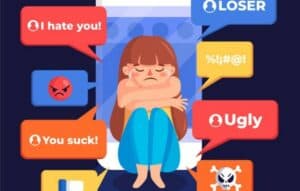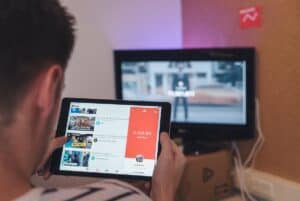The NFT market has exploded in popularity recently. Overall, it has revolutionized how people share and collect digital art. Digital artists are currently using NFTs as a way to monetize their art and connect with their community more efficiently. While NFTs are mainly used for digital art, these can be used to represent ownership of any digital asset.
NFTs took the world by surprise, and even now, not many people understand how they work or how they can make money with NFT art. Thankfully, there are dozens of sources where you can learn everything about how NFTs work, and we compiled them all in this article.
If you want to learn more about NFTs, where you can find them, and how you can make money with them as a digital artist, keep reading this article!
What Is an NFT?
NFT stands for “non-fungible token.” When an asset is “non-fungible,” it means that it cannot be traded for other similar items. In essence, when you have a non-fungible token, you’re holding a one-of-a-kind item. An NFT can be used to represent ownership of a wide variety of items online, and they can also be bought and sold indefinitely.
Once someone tokenizes an asset, it’s automatically secured on Ethereum blockchain technology, meaning no other person can alter the NFT’s records. In other words, the current NFT owner is unique.
On the other hand, when you have fungible tokens, you can easily trade them with an asset of similar properties; this is the case with money. If you have a $20 bill, you can change it for two $10 bills and keep the same value.
What Is the Difference Between an NFT and a Regular Internet File?
There’s an ongoing debate on whether it’s worth purchasing an NFT or not. Considering NFTs are only used to represent ownership of digital artwork or others, many people have asked themselves: “Can’t I just copy/download the file?”
The short answer is: Yes, you can. There’s nothing stopping anyone from downloading a digital file and keeping it on their computer. One of the most popular cases with NFTs happened with the artist “Beeple.” In March 2021, Beeple sold a print for $69 million; this made Beeple one of the artists with the highest-value NFTs in the world today. The digital piece that was sold was called: “Everydays – The First 5000 Days.”
Despite the NFT being valued at several millions of dollars, that didn’t stop people from copying and sharing the NFT art hundreds of times. In that case, what’s the point?
Keep in mind that while NFTs can essentially be copied hundreds of times, these users don’t hold any copyright ownership for that piece of work. Many people compare NFT tokens to autographed prints; some people may have the same print, but it’s the autograph that makes it one of a kind.
In other cases, new NFT owners can use the NFT marketplaces to continue selling the NFT, giving the original owner a percentage of profit. Overall, NFT tokens may be used to have proof of ownership stored in the public record and to place assets like art in a safe online environment, such as the Ethereum blockchain. On the other hand, regular internet assets are stored on regular servers and don’t offer any proof of ownership you can verify online.
What Are NFTs Used For?
Now that you know NFT stands for “non-fungible token,” it’s time to learn more about how it works within the Ethereum blockchain. As mentioned before, an NFT token is used to assign ownership of digital assets, which can be any of the following:
- Image
- Video
- GIFs
- Collectibles
- Legal Documents
- Deeds
- Tickets
Overall, people could mint any asset into an NFT, all it takes is to be creative with it. Most users use NFTs for minting an image, video, game, artwork, and other items of value. It’s important to note that NFTs may only have a single owner at a time on the marketplace. The ownership is assigned through unique IDs and metadata on the Ethereum cryptocurrency blockchain, which no other asset can replicate.
Minting an NFT involves using smart contracts to assign the transferability and ownership properties of the artwork. In essence, the process involves the following steps:
- Creating a new block into the Ethereum cryptocurrency blockchain.
- Validating the smart contract information.
- Recording the ownership information into the cryptocurrency blockchain.
Finally, a minted NFT token gives the owner a unique identifier linked to an Ethereum address. One of the most remarkable parts of NFTs is that creators and collectors can easily verify the information in any marketplace. It’s important to note that NFTs mostly exist in Ethereum and may only be transferred through an Ethereum-based marketplace.
How Do Royalties Work with NFTs?
An interesting thing about NFTs is that the creator can earn royalties as soon as the NFT is sold to someone else. Depending on the marketplace the creators work with, they may earn different royalty percentages for their artwork; for example, the owners of EulerBeats Originals are earning approximately 8% in royalties every time their NFT token is sold.
Most NFT and crypto markets support creators through considerable royalty percentages. However, other sites are not as friendly for creators. In essence, you must look for the right platforms if you want to earn something for your NFT sales in the future.
Thankfully, the royalty payment process is entirely automatic on most sites. In these cases, the creator is going to earn money each time they sell the NFT. In case your NFT already has a royalty program in it, all you have to do is wait until you sell it to someone else.
How Does Asset Scarcity Work with NFTs?
In most cases, the artists decide how scarce their digital assets (or assets in general) are going to be for the world; for example, there may come a time in which you want to sell tickets for an event as NFTs. There, you can decide how many replicas of the same NFT you’re going to sell on the market. Regardless of the option the artists choose, each NFT is still going to have a unique identifier with a single owner.
While most artists use NFTs to create a one-of-a-kind token to increase its value, they may also use them to create a limited amount of the same asset.
How Can You Make Money with a Non-Fungible Token (NFT)?
As stated before, NFTs can be bought and sold as the artists/collectors consider appropriate. However, some artists still haven’t figured out how they can sell their art on the internet and make a profit from it. While the process may seem a bit complicated, it’s not as hard to start making sales with their artwork; all it takes is choosing the right platforms to work with and set up an Ethereum wallet.
Before the NFT world started to increase in popularity, most digital artists used social media to create a community, seek exposure, and sell their art on the blockchain. However, one downside to this method is that the artist typically would have to pay the social media platforms money to gain exposure, which didn’t ensure that the art piece was going to get sold.
In the case of NFTs, the funds go directly into the owner’s crypto wallet once the tokens are sold. Additionally, if the new owner sells the digital asset to someone else, the original proprietary could earn royalties automatically, making the process even more convenient for everyone. Once the artist receives their money, they can go into their crypto wallet and exchange the Ethereum tokens for cryptos like Bitcoin or other assets.
The Main Problem with NFTs on the Market
Considering the high value most NFTs have (remember that some of these assets are being sold for millions of dollars right now), some people are still skeptical about them. The main argument from these people is “I can just screenshot that picture and have it for free.” As mentioned before, anyone could simply go into the internet, look for a picture of the Mona Lisa, and download it. However, that doesn’t make you the proprietary of the original piece.









